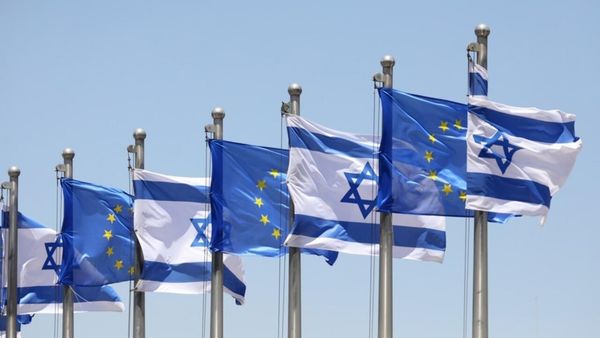
Some call him the new Pelé, others the next Lionel Messi. One thing is certain: every football team could do with a player like Neymar in its ranks, and the São Paulo street children who represented Brazil at the inaugural Street Child World Cup in Durban two years ago are no different.
Fortunately, in Marcelo da Silva, the kids have a Neymar of their own. Same hometown. Same uber-cool mohawk. Similarly impish personality, as is plain to see when he adopts a tough-guy expression for a photograph before breaking into a conspiratorial grin the moment the snapper's lens is turned. And if he falls short of Neymar's stratospheric standards, a Brazilian birth certificate naturally ensures Da Silva is none too shoddy with a ball at his feet, either.
There, though, the similarities end abruptly. Raised in the same state as the star whose face seems to peer out from every billboard and magazine cover in Brazil, Da Silva, 15, inhabited a starkly contrasting world. He never knew his father, was beaten by his mother, and fled home life along with his brother at the age of six, spending his early years on the streets.
"My mother used to treat me very badly," says Da Silva. "She used to do drugs in the house and beat me. Me and my brother, Eduardo, got out of the house and ran away from her; we went to the streets. We used to mug people and beg for money to survive."
It was a grim inversion of childhood in which simple pleasures like spending a day at the seaside or playing with schoolmates were denied. The brothers befriended other street kids, but a visit to the beach ended in tragedy when the group got lost and one of them drowned. On another occasion, a member of the party was shot and lost an arm. A minor transgression ended with police beating Da Silva's head against a wall. Even the brothers' supposed friends eventually turned violent, forcing them to flee once again.
"It was frightening, but it was fun as well, because I was away from my mother," says Da Silva.
His ordeal finally ended when an outreach scheme, Projeto Quixote, got him off the streets and into a shelter in Mogi das Cruzes, the São Paulo municipality best known outside Brazil as Neymar's birthplace.
Marginalised and frequently criminalised, street children live in an environment where they are vulnerable to violence, abuse, disease and malnutrition; liberated from that world, Da Silva has been more fortunate than many.
How many remains a moot point, however. Street kids are a global issue, yet – partly for that very reason – reliable facts and figures are hard to come by. How do you define a street child? How do you get a handle on a problem that crosses national borders, shifting in nature and scale as it goes, and affecting rich and poor countries alike?
As Street Child World Cup chief executive Andrew Webb points out, there are no simple answers. "There are tremendous contrasts," he says. "If you try and compare street kids in Mumbai with street kids in Mwanza, their situations are very different, and so the opportunities for solutions are very different too.
"But it's not beyond the ability of national governments to tackle the problem. Essentially, what we're doing is working with national NGOs in each participating country who've got solutions to the issues that surround street children and can enter into a dialogue with their local governments to say: 'These are the best ways forward'."
The potential benefits of adopting a tailored approach are reflected in a census published this week by the charity Street Children of Sierra Leone. Based on research undertaken in conjunction with local government and 62 NGOs, the survey suggests there are 50,000 children living on the streets of Freetown, the national capital.
The hope is that concrete information like this will compel governments to act. Until such work is replicated on a broader scale, however, the onus will necessarily fall on initiatives such as the Street Child World Cup and the International Day for Street Children, an annual event that aims to highlight the issues and give street kids a voice.
Da Silva and company, in London to launch the Brazil 2014 edition of the Street Child World Cup, will act as mentors to the next street-kid Selecao, maximising the chances that those following in their footsteps will benefit as they have from the competition's ability to alter perceptions.
On that theme, Webb recalls how the Tanzanian children were handed a national flag as they boarded the plane for the 2010 tournament in South Africa.
"Suddenly, they realised that they – street children – were representing their country," he says. "It gave them an enormous sense of confidence and self-esteem and, at the same time, their governments and the people in their hometowns saw them so differently. They didn't view them as criminals or people without a future."
The tournament, ultimately won by India, received high-profile support from football luminaries such as David Beckham and Sir Alex Ferguson.
"We got eight countries to take part, and it was a tremendous success," say Webb. "We knew we had something, so we thought we'd expand the idea. Brazil, of course, is the spiritual home of football and a country that has a lot of street children with very real issues that need to be addressed."
Contestants in the 2014 tournament, which will be held in Rio de Janeiro before the next World Cup, will be chosen with the help of NGOs based in participating countries. All will hope to return home winners; Webb, however, sets his sights even higher. "Our goal is that no child should have to sleep on the streets," he says.
Da Silva's hopes are more modest. "There should be more shelters," he says softly, "and family and friends should support children."
• Some names have been changed







